A SERIES OF WALKS ALONG THE EMBANKMENT
THIS PAGE IS PRODUCED IN CONJUNCTION WITH
DAVE HILL
PART FIVE: VICTORIA EMBANKMENT GARDENS
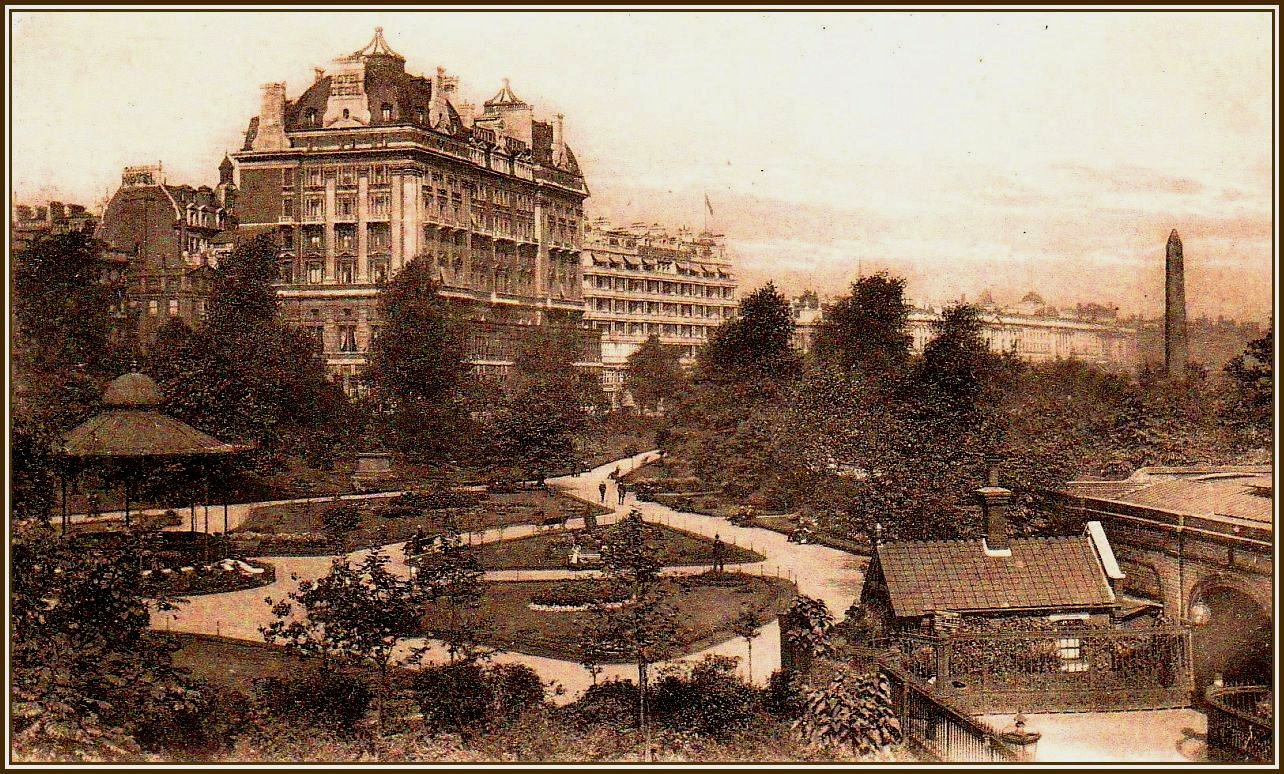 Hotel Cecil, Cleopatra’s Needle & The Main Gardens (with Band Stand)
Hotel Cecil, Cleopatra’s Needle & The Main Gardens (with Band Stand)
-oOo-
THE MAIN GARDENS
MEMORIALS CONTINUED
-oOo-
WILLIAM EDWARD FORSTER
William Edward Forster (1818-1886) was a successful industrialist (wool), philanthropist and Liberal Party statesman. Mr. Forster was born a Quaker (i.e. Friend; The Religious Society of Friends), but since he married out-of-the-faith, he was Read Out of Meeting (i.e. Excommunication) and took up his wife’s faith (i.e. Anglican, Church of England).
In 1846, Forster accompanied his father to Ireland as a distributor of the Friends’ Relief Fund to provide aid during the famine in Connemara. This trip took place at a time when many in authority denied the existence of this problem. The events, and what he saw, were to make a deep impression on him.
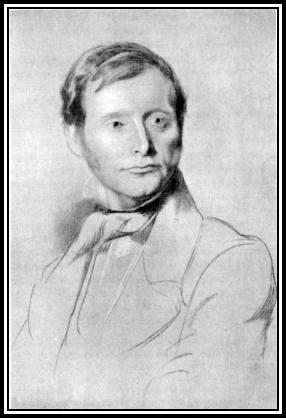 William Edward Forster, 1851 (Project Gutenberg eText 13789)
William Edward Forster, 1851 (Project Gutenberg eText 13789)
Although Forster was a success in business, he was more interested in liberal causes. He entered Parliament in 1861 and immediately became involved in its reform. By 1866, he was among those who demanded that Universal Education be an essential complement of parliamentary reform. In 1868 he was given the job of preparing an elementary education bill and became noted for his role in the passage of the Education Act of 1870, which established the elements of a National Primary School System. Passage of The Bill only came after a prolonged debate between Anglicans and Nonconformists over its religious clauses.
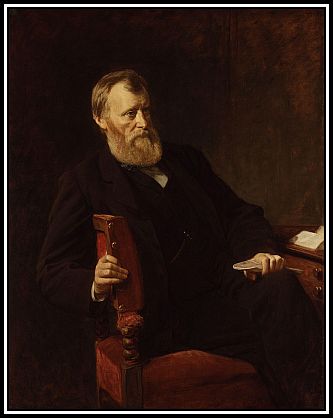 William Edward Forster, painted by Henry Tanworth Wells (1828-1903)
William Edward Forster, painted by Henry Tanworth Wells (1828-1903)
Between 1880 and 1882, Forster was made Chief Secretary for Ireland. As a radical, he approved of extensive Land-Tenure reform in Ireland, but, faced with the violence of the Irish Agricultural Revolution, he called for parliamentary measures to maintain law and order, which failed. He was nicknamed Buckshot by the press, on the supposition that he had ordered the firing of bullets on a crowd by the police. Despite his life being in constant danger from the autumn of 1881, in March 1882, he visited some of the most turbulent districts to address angry Tenant Farmers.
In May 1882, when the Government agreed to release Charles Stewart Parnell and other Irish Nationalist leaders from jail, Forster seized the occasion to resign. Four days later his successor, Lord Frederick Cavendish (1836-1882), was murdered by Irish terrorists (i.e.Irish National Invincibles) in Dublin. Forster offer to return as temporary Chief Secretary was declined. Later, he made several intemperate speeches on Irish personalities and issues.
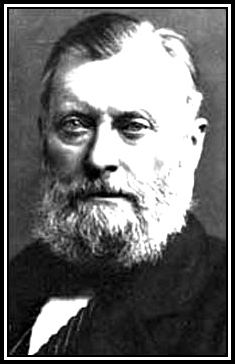 Photograph of William Edward Forster
Photograph of William Edward Forster
Although, Forster was interested in a number of subjects following his resignation, his work was overshadowed by his work in Ireland. Forster died in April 1886 and remained an avowed opponent of Gladstone’s policy of Home Rule for Ireland.
-oOo-
On the front of the plinth:
William Edward Forster, born July 11 1818, died April 5 1886.
To his wisdom and courage England owes the establishment throughout the land of a national system of elementary education.
Around the base of the statue, and from the front:
William Edward Forster, for twenty-five years, Member of Parliament, for Bradford 1861- 1886.
-oOo-
HERBERT EATON, THIRD BARON CHEYLESMORE
Herbert Francis Eaton, third Baron Cheylesmore (1848-1925) was a sportsman, Army Officer and Peer of the Realm. In 1867, he joined the Grenadier Guards where he enjoyed a successful career and became a Major-General in 1899 and was appointed a Knight of Grace of the Venerable Order of St. John (KStJ) in July 1901.
Eaton became the third Baron Cheylesmore upon his brother’s death in July 1902 and took his place in the House of Lords soon after. He was an alderman of Westminster City Council and became the Mayor of Westminster for 1905–06. In December 1907, he was appointed a Deputy Lieutenant of the County of Middlesex.
-oOo-
Between 1912 and 1913, he was Chairman of the London County Council and opened the Woolwich Foot Tunnel in 1912. During World War I, he presided over Courts Martials and also held the position of Chairman of the National Rifle Association.
Eaton died at the age of 77 years in a motor accident in 1925. A Memorial to him is found in the Main Gardens and was the work of Sir Edwin Lutyens (1869-1944).
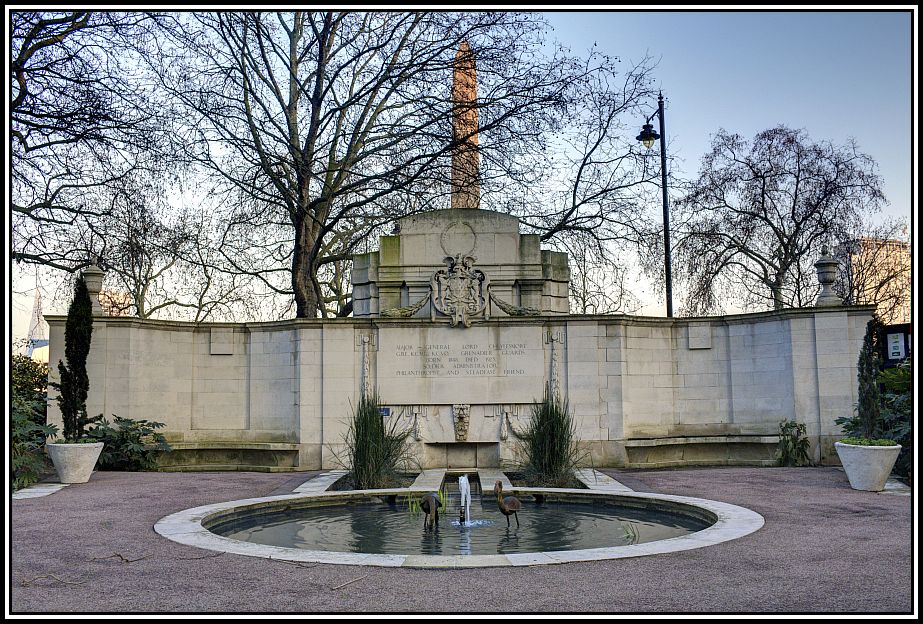 Memorial to Herbert Edward Eaton, Third Baron Cheylesmore
Memorial to Herbert Edward Eaton, Third Baron Cheylesmore
-oOo-
HENRY FAWCETT
Henry Fawcett (1833-1884) was an academic, statesman and economist. At the age of 25, in 1858, he was blinded in a shooting accident. However, he continued his studies and later began training as a barrister. In 1860, he gave up this plan and returned to the study of Economics. In 1863, he published his book, Manual of Political Economy and was offered the Chair of Political Economy at Cambridge. Fawcett became an authority on Economics and wrote a number of well received books on the subject. In 1883, he was elected Rector of Glasgow University.
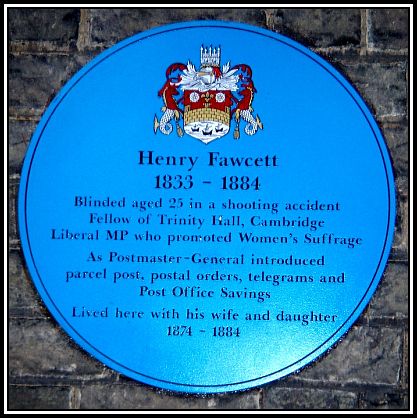 Blue Plaque at 18 Brookside, Trumpington Road, Cambridge
Blue Plaque at 18 Brookside, Trumpington Road, Cambridge
-oOo-
Henry Fawcett was a supporter of Charles Darwin‘s Theory of Natural Selection, a term that was introduced in Dawin’s book, On the Origin of the Species, published in 1859 and involved himself in a number of debates on this subject.
-oOo-
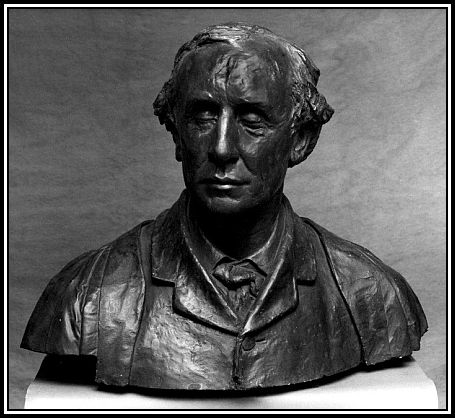 Bust of Henry Fawcett by Henry Richard Hope-Pinker (1850-1927)
Bust of Henry Fawcett by Henry Richard Hope-Pinker (1850-1927)
Fawcett stood as a candidate of the Liberal Party a number of times with no success. In 1865, he was elected Member of Parliament (MP) for Brighton in 1865 and held this seat until 1874. Between 1874 and 1884, he was MP for Hackney and during his campaigns, he was a supporter of Women’s Suffrage.
-oOo-
In 1867, Henry Fawcett married Miss Millicent Garrett (1847-1929) who was a feminist, intellectual, political and union leader, and writer. Her major interest, besides working to obtain the vote for women, was campaigning for better educational opportunities for them. In 1871, she co-founded Newnham College, Cambridge and later became President of the National Union of Women’s Suffrage Societies (NUWSS), a position she held from 1907 until 1919.
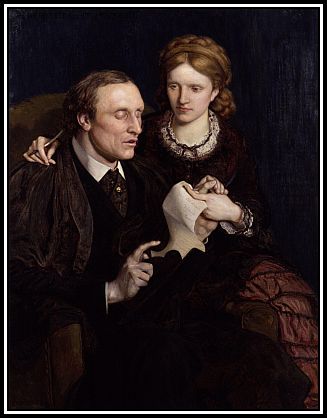 Henry Fawcett & Millicent Garrett Fawcett, painted by Ford Madox Brown (1821-1893)
Henry Fawcett & Millicent Garrett Fawcett, painted by Ford Madox Brown (1821-1893)
-oOo-
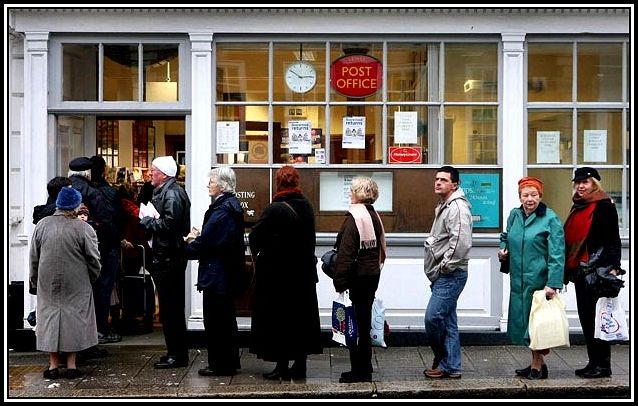 Post Offices, the world over, have Queues!
Post Offices, the world over, have Queues!
-oOo-
In 1880, Henry Fawcett was appointed Postmaster-General by the Prime Minister, William Ewart Gladstone (1809-1898). He encouraged the populace to save small amounts of money and deposit it in the Post Office Savings Bank. People saved their pennies and when the amount reached one shilling (i.e. 1/-; 12 old pennies), which was the minimum amount accepted by The Bank, it could be deposited into their Post Office Savings Account.
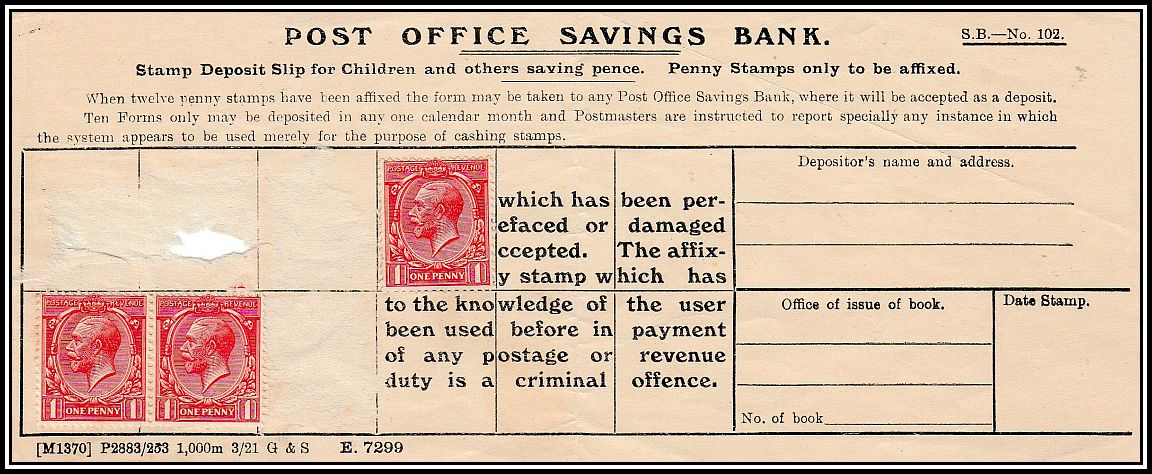 Post Office Savings Form where One Penny Stamps were added to a total of One Shilling
Post Office Savings Form where One Penny Stamps were added to a total of One Shilling
Fawcett was able to encourage Parliament to pass an Act to allow savers to convert their Post Office Savings into government stock. He also developed the Post Office’s Life Insurance and Annuities Schemes and in addition, he introduced a number of other innovations, including Parcel Post, Postal Orders, Telegrams and licensing changes to permit Pay Telephones and Trunk Lines.
-oOo-
-oOo-
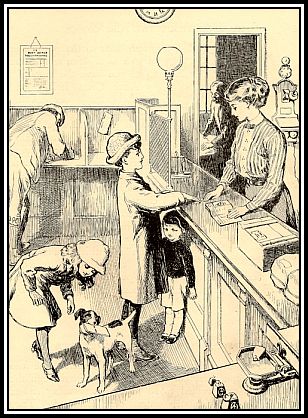 Paying One’s Pennies into the Post Office Savings Bank
Paying One’s Pennies into the Post Office Savings Bank
I remember opening a Post Office Savings Account at a very young age and receiving the Pass-Book in my very own name. I was encouraged to do this by my mother, who also had one. She said that one was never too young to learn the importance of saving a little each week. She also believed that one day, which she referred to as that rainy day, one’s savings would prove useful. And, of course, she was proven right!
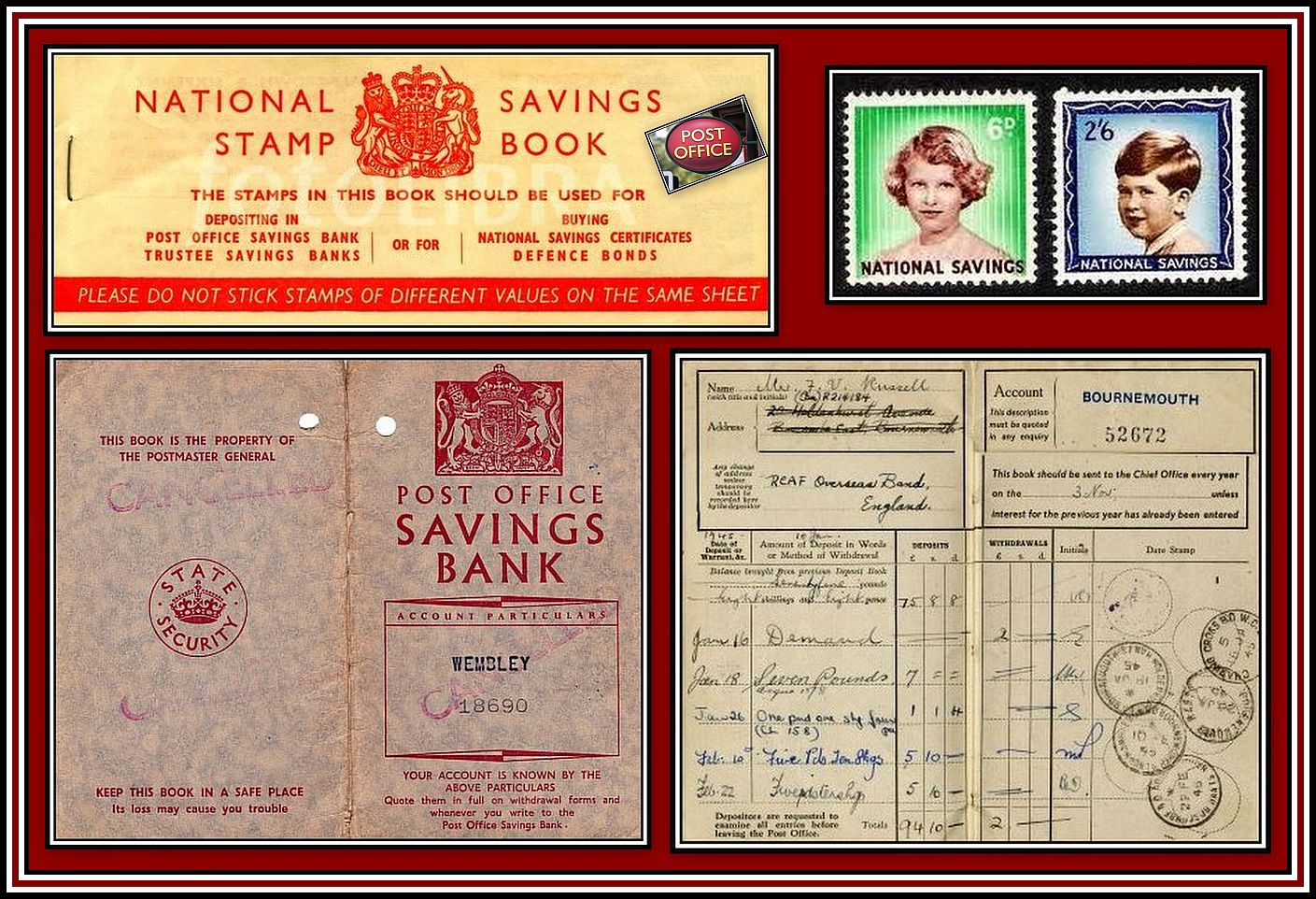 Post Office Savings Stamps Book and Saving Stamps (Top) & Post Office Savings Book (Bottom)
Post Office Savings Stamps Book and Saving Stamps (Top) & Post Office Savings Book (Bottom)
Before my mother was married, she went to work to support her siblings, mother and stepfather. She was never allowed to keep any of her hard-earned wages for herself. Once she was married, she always tried to scrap together a few pennies whenever she could and when the amount reached a shilling or more, she deposited the monies into her Account. My father, on the other hand, was never able to collect together even a few pennies during his lifetime. Money either ran through his fingers like water or else burned a hole in his pocket and he was never able to open such an Account.
I remember signing the deposit slip as a child and proudly presenting it, and my money, to the clerk behind the counter. I always enjoyed hearing the sound of the inked stamp being thumped on my deposit slip and then waiting to get my Pass-Book back and checking to see that no mistake in arithmetic had been made when he or she entered the new total. Once I learned to write properly, I was able to complete the slip myself and was even prouder to make my own deposit. I maintained my Post Office Savings Account throughout my school years until I went to college where upon I opened my first Bank Account.
Thanks to Mr. Henry Fawcett, members of the Working Class were encouraged and able to save a little money each week and were offered a safe place where it could be kept for that rainy day!
-oOo-
Henry Fawett died from Pleurisy in 1884 at the age of 51 and was buried in Trumpington Extension Cemetery, Cambridge. A Memorial Statue is present at Salisbury, which is where he was born, and is a life-size and stands on a polished granite plinth.
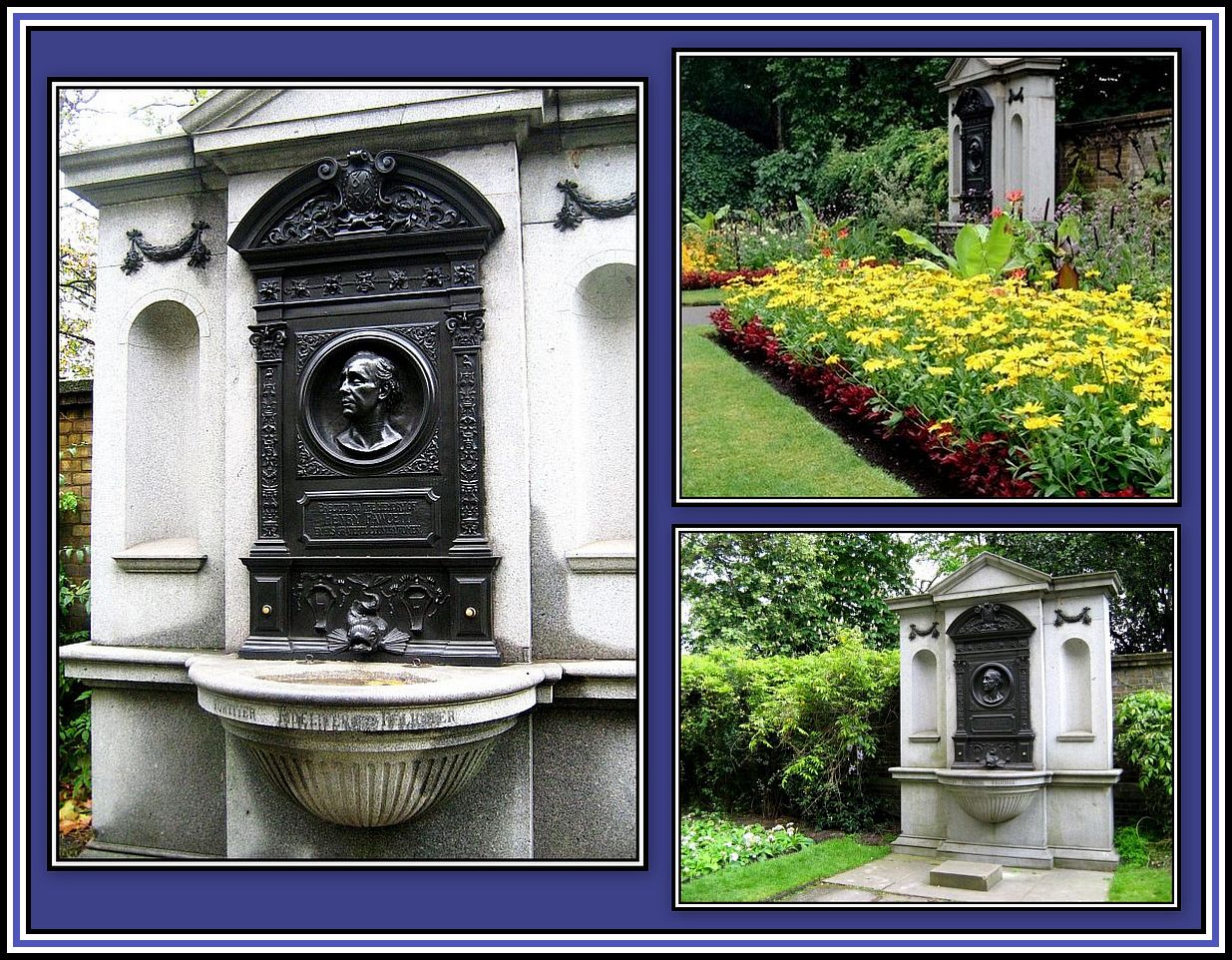 Memorial to Henry Fawcett in the Main Gardens (a drinking fountain and plaque), which was designed by Mary Grant & George Frampton, and unveiled in 1886
Memorial to Henry Fawcett in the Main Gardens (a drinking fountain and plaque), which was designed by Mary Grant & George Frampton, and unveiled in 1886
The Inscription beneath the Relief Bust states:
Erected to the memory of Henry Fawcett by his grateful countrywomen
(signed) Mary Grant, Sc. 1886
Below the rim of the fountain’s bowl appear the words: Fortiter, Fideliter, Feliciter
-oOo-
MEMORIAL TO THE IMPERIAL CAMEL CORPS
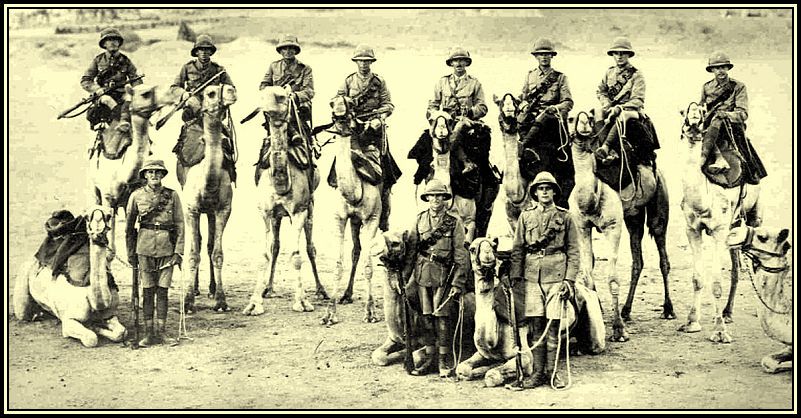 Dorset Yeomanry formed part of the Imperial Camel Corps Brigade
Dorset Yeomanry formed part of the Imperial Camel Corps Brigade
The Imperial Camel Corps Brigade (ICCB) was a Camel-Mounted Infantry Brigade raised in December 1916 and saw service during the First World War in the Middle East. The Brigade consisted of four Battalions: one each from the U.K. and New Zealand and two from Australia; and was under the command of Brigadier General Clement Leslie Smith VC (1878-1927).
The ICCB formed part of the Egyptian Expeditionary Force (EEF) and fought in a number of battles and engagements. Two companies saw service with T.E. Lawrence (1888-1935) during the Arab Revolt (1916-1918) against Ottoman Turkish rule.
The ICCB suffered the loss of 246 men killed in action: 106 British, 84 Australians, 41 New Zealanders and nine men from India. The Brigade was disbanded in May 1919 soon after the end of the War.
-oOo-
A Memorial to the Imperial Camel Corps was unveiled in July 1921 in the Main Gardens by Lieutenant-General Sir Philip Chetwode (1869-1950), who had been the first commander of the Desert Mounted Corps., which included the ICCB. Others present at the unveiling ceremony included Brigadier-General Clement Smith, a number of former Cameliers and the Prime Ministers of New Zealand and Australia.
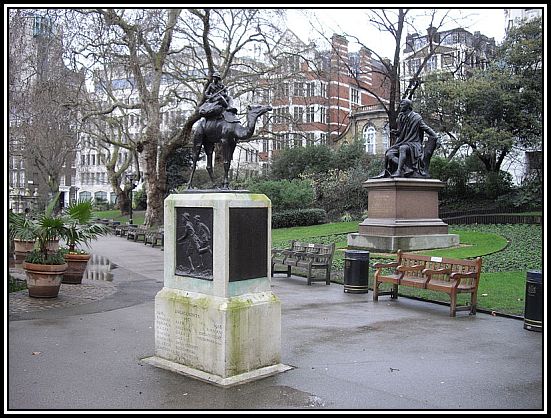 Memorial to the Imperial Camel Corps.
Memorial to the Imperial Camel Corps.
The Memorial was sculpted by Major Cecil Brown, who had served in the ICCB, and consists of bronze elements cast by the A. B. Burton Foundry in Thames Ditton. The Memorial consists of a smaller-than-life-size bronze statue of a man riding a camel, which stands on a Portland stone pedestal that bears bronze panels on its four sides.
On one side of the pedestal, the Memorial is inscribed with the names of all the members of the ICCB who died during the War and on the front appears the following inscription:
To the Glorious and Immortal Memory of the Officers, N.C.O’s and Men of the Imperial Camel Corps – British, Australian, New Zealand, Indian – who fell in action or died of wounds and disease in Egypt, Sinai, and Palestine, 1916, 1917, 1918
The monument also lists the battles and engagements fought by the ICCB.
-oOo-
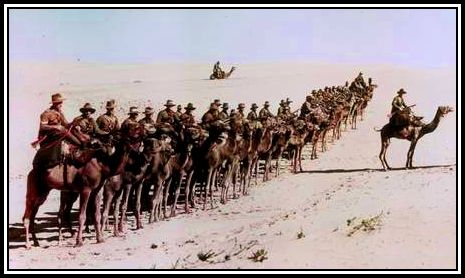 Australians Cameliers of the Imperial Camel Corps on the Sandhills (
Australians Cameliers of the Imperial Camel Corps on the Sandhills (
-oOo-
ANGLO-BELGIAN MEMORIAL
On the outer south-east side of the Main Garden opposite Cleopatra’s Needle is the Anglo-Belgian Memorial (i.e. the Belgian Gratitude Memorial; the Belgian Refugees Memorial). This War Memorial was a gift from the people of Belgium, as a mark of thanks for the assistance given to them by the U.K. during the First World War, and in particular, for sheltering thousands of Belgian refugees who fled the War.
Plans for a Memorial were first proposed in 1916 by a group of Belgians who suggested that money for it should be raised by public subscription.
The Memorial was designed by Sir Reginald Blomfield (1856-1942) with a central bronze sculpture depicting a Belgian woman accompanied by a boy and a girl carrying garlands of flowers. The sculpture was the work of Belgian sculptor Victor Rousseau (1865-1954) who had been a refugee in London himself for a time during the War. The sculpture was cast at the A. B. Burton Foundry at Thames Ditton and stands on a stone plinth bearing the inscription:
To the British nation from the grateful people of Belgium, 1914–1918
Behind the sculpture is a curved screen wall of Portland stone, which bears two further relief sculptures representing, on the left, Justice and, on the right, Honour.
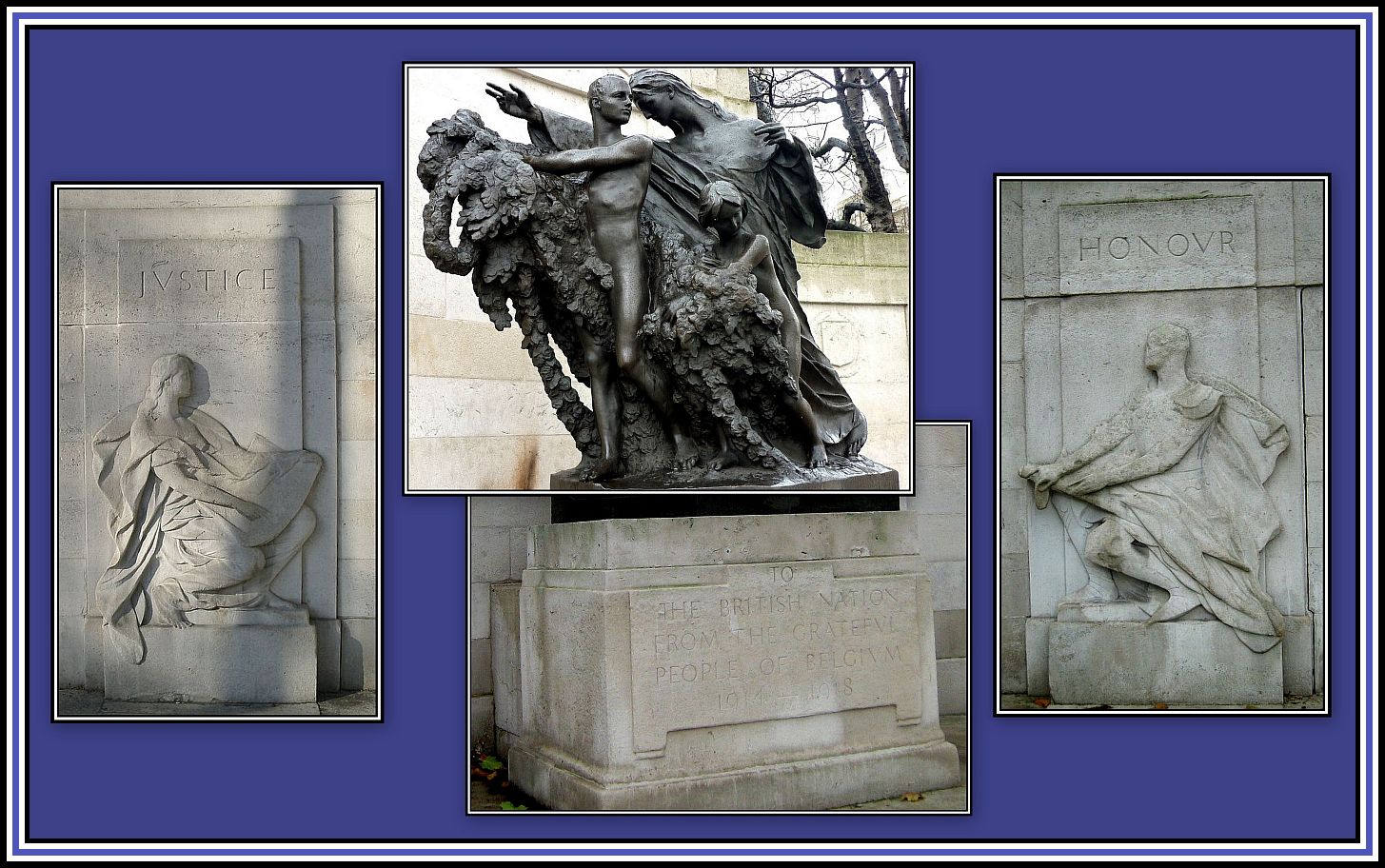 Details of the Anglo-Belgian Memorial
Details of the Anglo-Belgian Memorial
The screen wall also bears carved wreaths and nine heraldic shields, representing the Provinces of Belgium: Brabant, Antwerp, Liège, Hainault, Namur, Limburg, Luxembourg, East Flanders and West Flanders.
-oOo-
The Memorial was unveiled by Princess Clémentine of Belgium (1872-1955) at a ceremony on 12th October, 1920, which was the fifth anniversary of the execution of Nurse Edith Cavell (1865-1915) in Brussels. The unveiling ceremony was attended by the Prime Minister of Belgium, M. Leon Delacroix (1867-1929), and the gift was formally accepted on behalf of the British nation by Lord Curzon (1859-1925) who was Secretary of State for Foreign Affairs at the time.
-oOo-
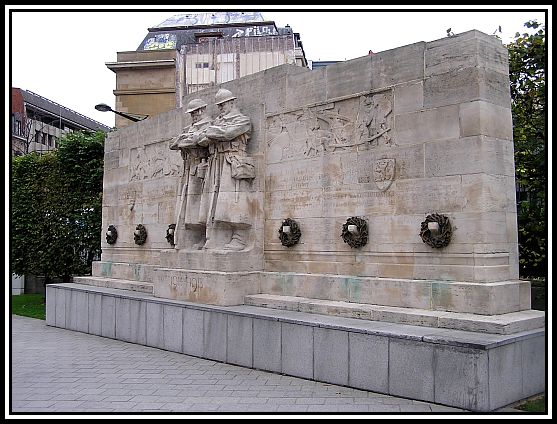 The Anglo-Belgian Memorial in Brussels
The Anglo-Belgian Memorial in Brussels
In 1923, an Anglo-Belgian Memorial was erected in Brussels, which was designed by the sculptor, Charles Sargeant Jagger (1885-1934).
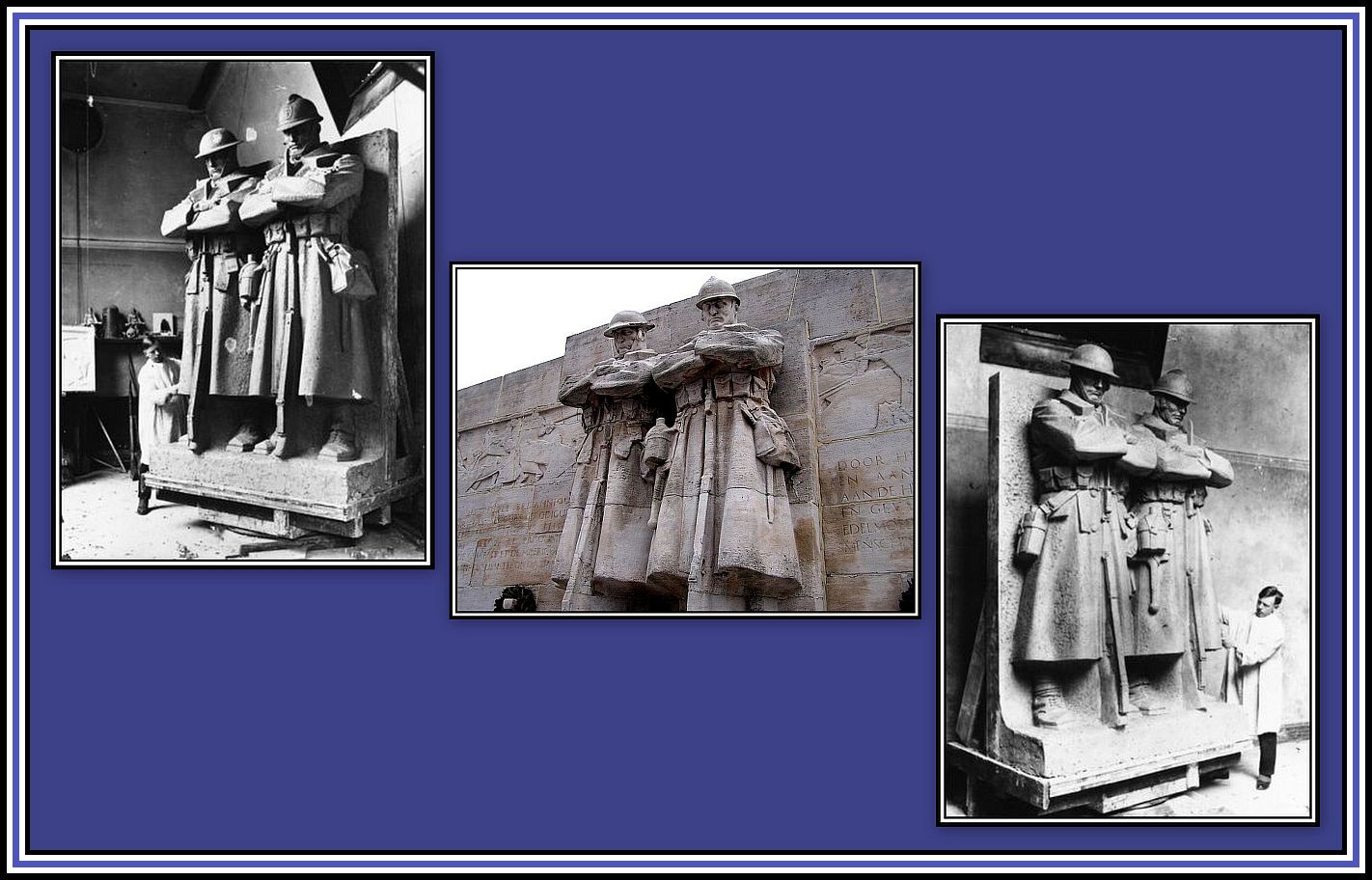 Charles Sargeant Jagger at work on the Memorial
Charles Sargeant Jagger at work on the Memorial
Photographs of Charles Sargeant Jagger are from The de Laszlo Collection of Paul Laib Negatives
——oooOOOooo——
In 2005 a temporary Memorial Garden was laid out for the victims of the 7th July, 2005 London bombings. The Memorial Garden remained open until 21st August, 2005 and was visited by a large number of people.
An official plaque was unveiled under an Indian Bean Tree in the Main Gardens and reads:
Under this tree people of all faiths and nationalities, united in grief, laid wreaths in memory of those killed on 7th July 2005, following the attacks on London’s public transport system.
——oooOOOooo——
ACKNOWLEDGEMENTS
I would like to thank Mr. Paul Bland for his help in the writing of this piece.
——oooOOOooo——
Click here to GO to PART SIX: VICTORIA EMBANKMENT GARDENS – WHITEHALL GARDENS & COURT
——oooOOOooo——
Click here to RETURN to PART FOUR: VICTORIA EMBANKMENT GARDENS – TEMPLE GARDENS
——oooOOOooo——
Click here to RETURN to A SERIES OF WALKS ALONG THE EMBANKMENT Home Page
——oooOOOooo——
Click here to GO to AN ADDITIONAL SET OF POSTCARDS OF OLD LONDON: THE EMBANKMENT by DAVE HILL
——oooOOOooo——
Click here to GO to ISAMBARD KINGDOM BRUNEL
——oooOOOooo——
Click here to RETURN to the TABLE OF CONTENTS
——oooOOOooo——

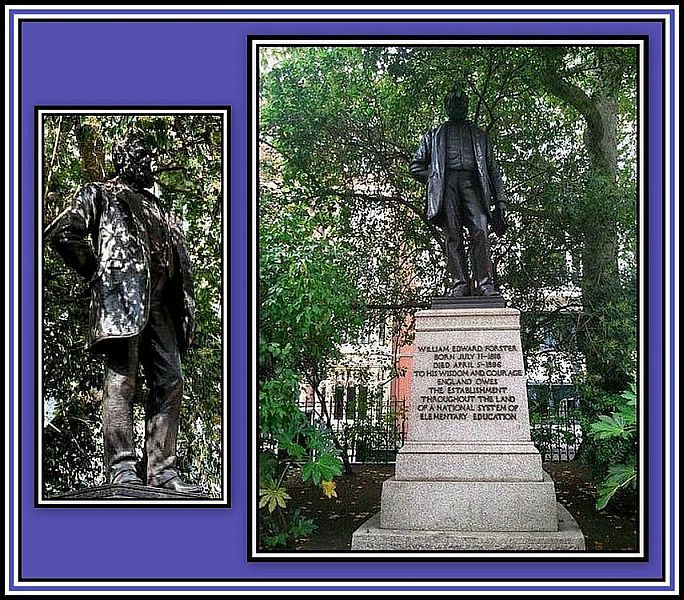
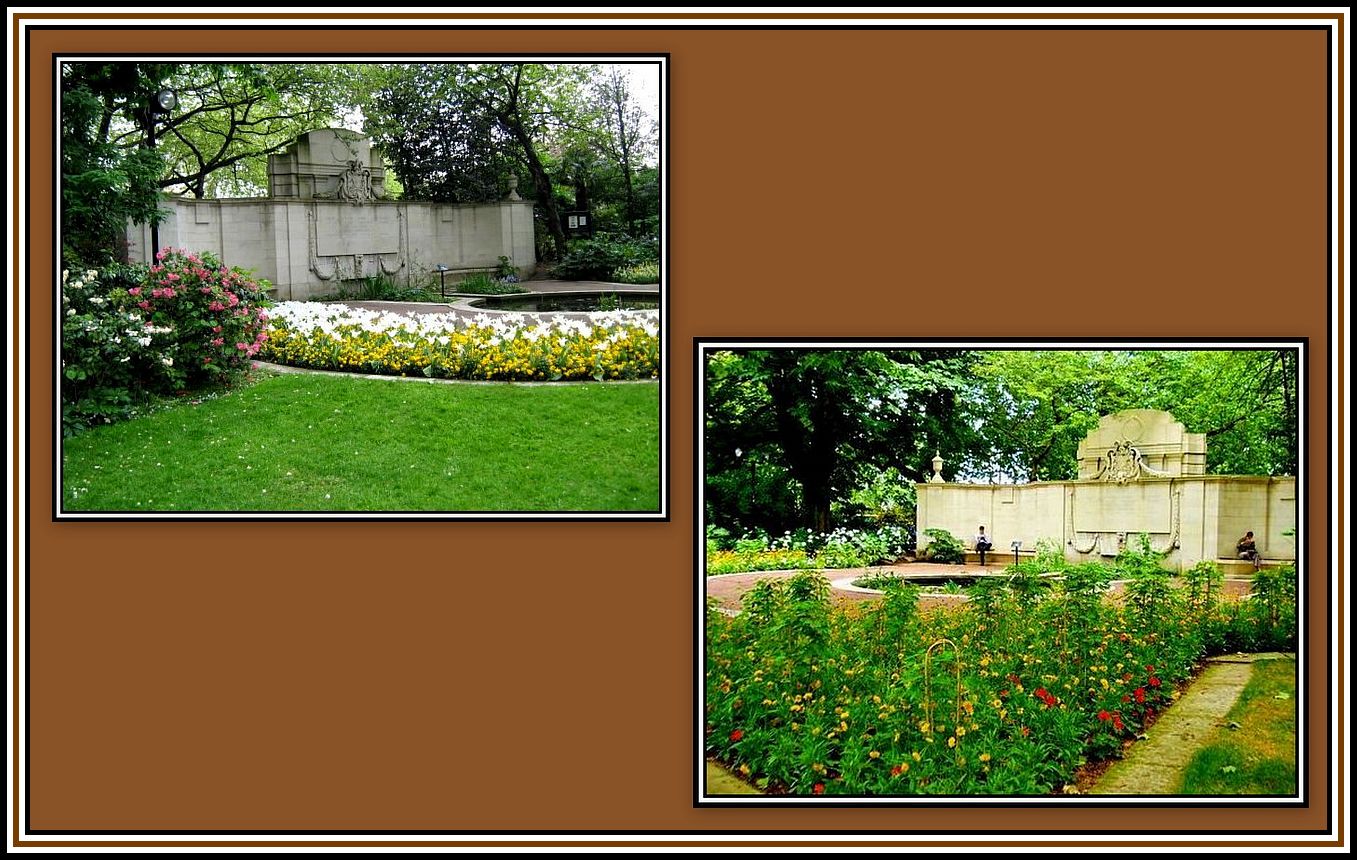
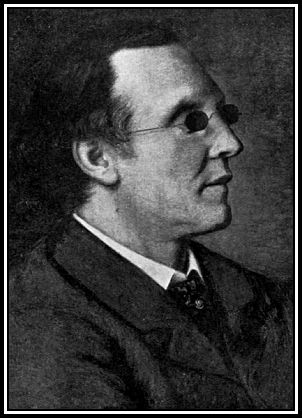
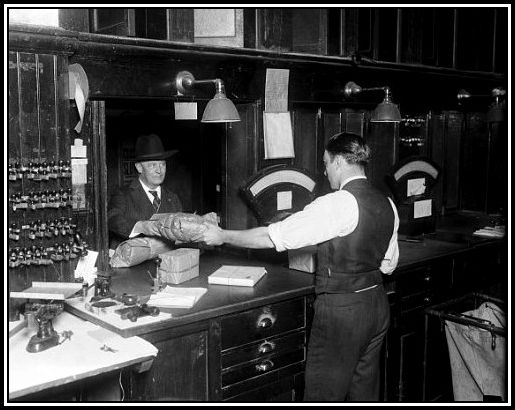
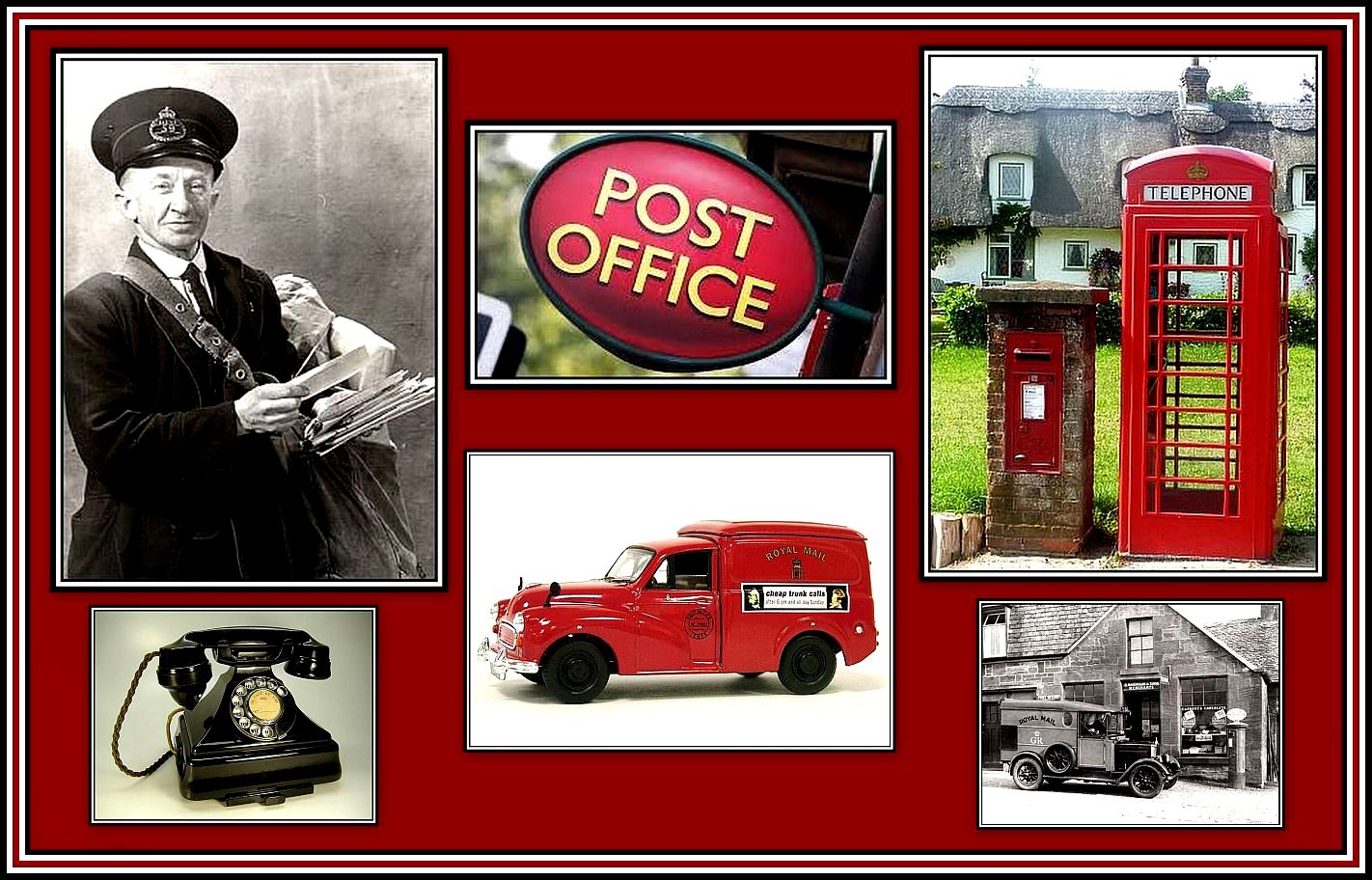
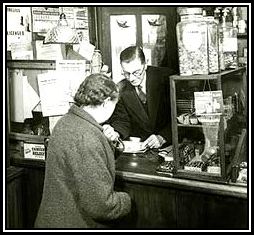
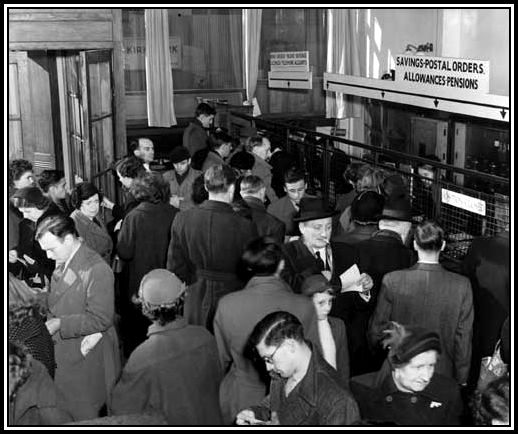
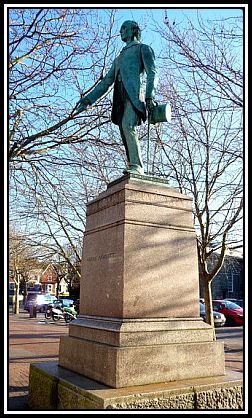

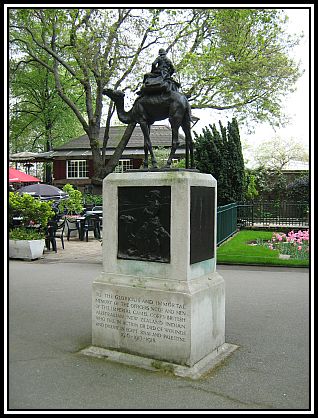
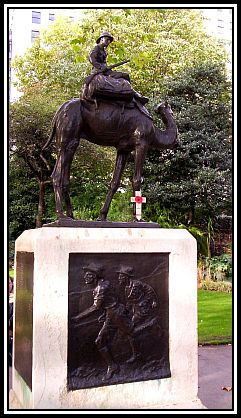
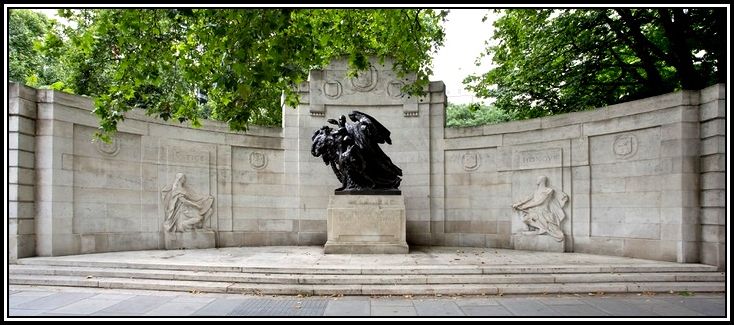
In August 2017, during a journey in London in the occasion of my son’s birthday, I have seen personally the monument to the memory of the economist Henry Fawcett, in the Victoria Embankment Gardens . I remember that I was impressed because of the dedication to Fawcett written on it “by his grateful countrywoman” and by the latin inscription “fortiter, fideliter, feliciter”.
I think that the monument is very touching and shows the feeling of gratitude of the country to Henry Fawcett for his merits and well-deserving.
Ms Varoli: Thank you very much for taking the time to write a comment. With kind regards.